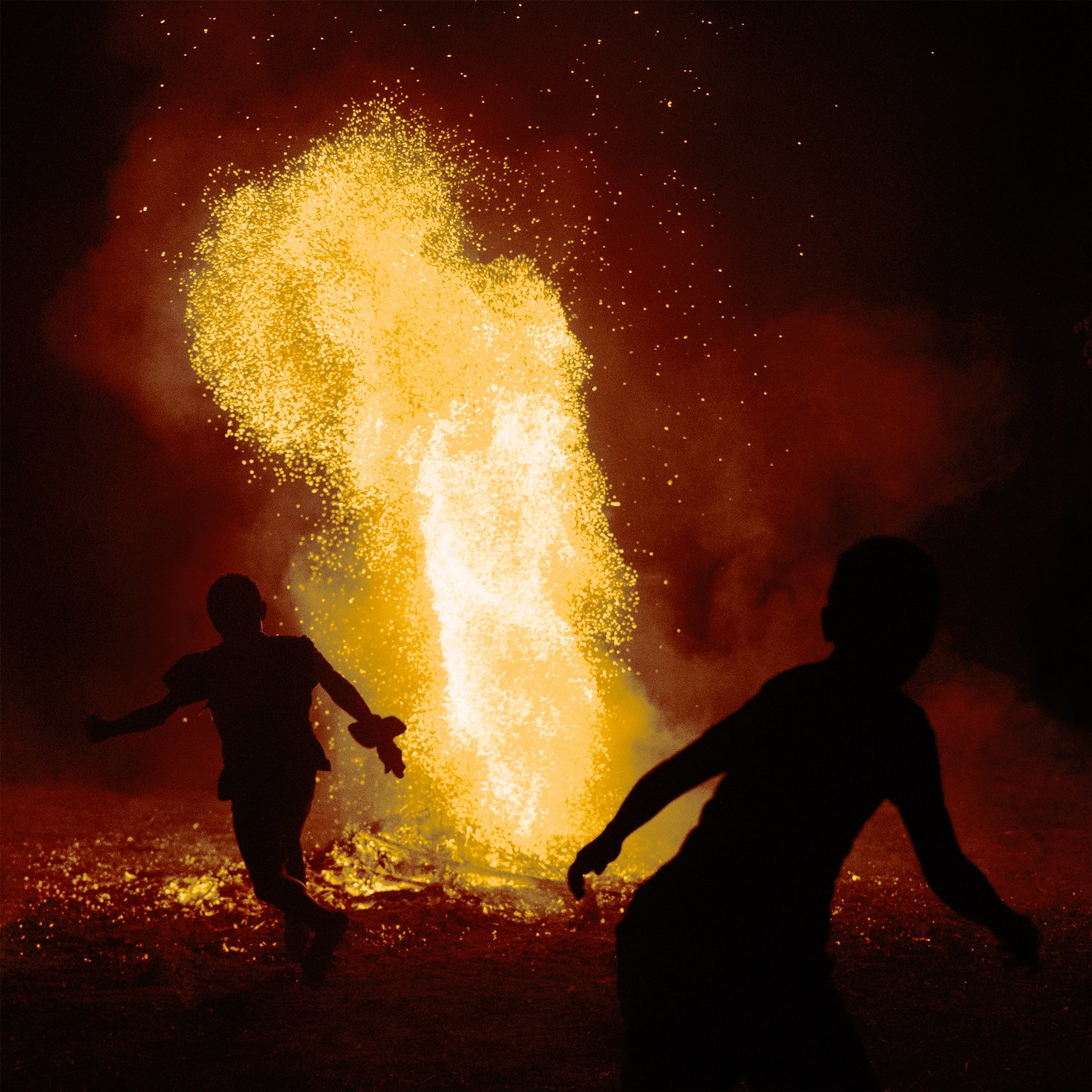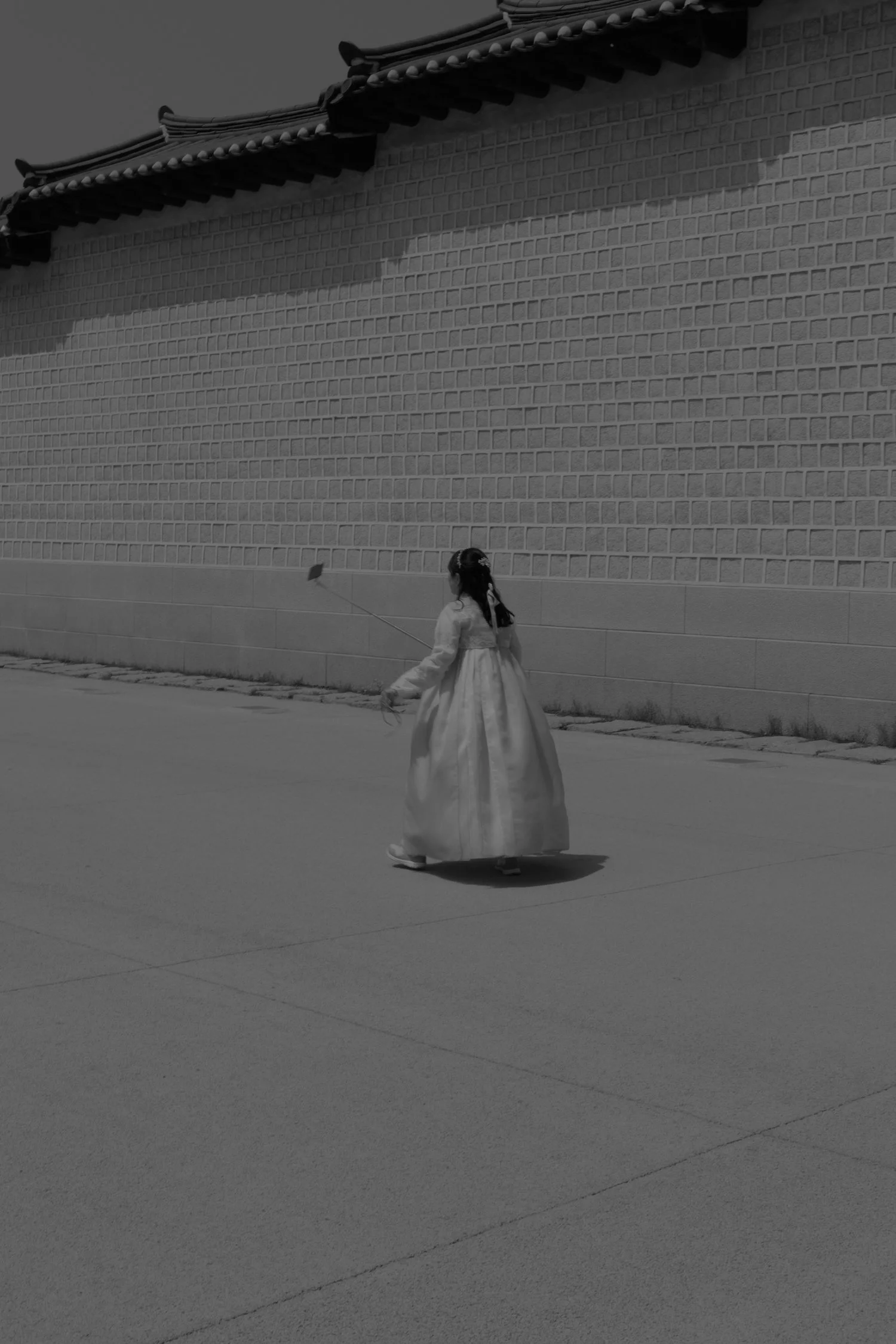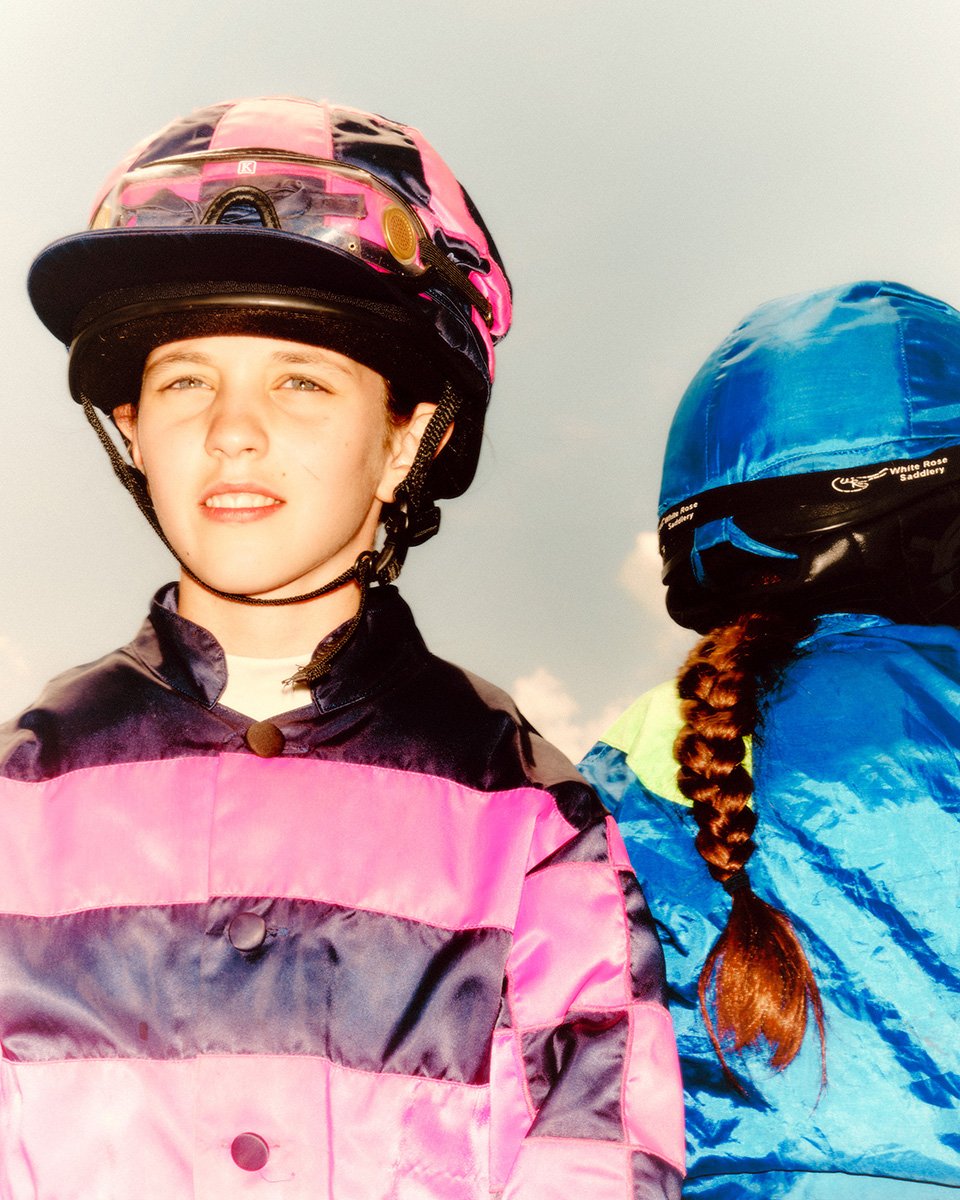God of the Sun
Juan Brenner’s TONATIUH is documenting the scars and the ongoing suffering of the people of Guatemala brought to the country by Spanish conqueror Pedro de Alvarado about 500 years ago.
All images by Juan BrennerWhen did this historic context first get your attention and why did you decide to do more research on this and subsequently photograph it?
Tonatiuh wasn’t actually the project I wanted to do, in the beginning I was thinking about indigenous power. I was really inspired by the display of power and the social dynamics of the communities in Peru, Bolivia and Ecuador .They have a very different set of rules and are way more advanced, in terms of social importance and racial issues, than the communities in Guatemala.
I started researching that topic: Indigenous power, it was very difficult to get anywhere as the Guatemalan Highlands are just starting to leave behind a lot of dead weight from the internal war and the colonial process; also through interviews with historians and anthropologists, I realised “power” is a very complex concept; specially when the gatekeepers of that power are the white Euro-descendant elites.
I got very frustrated as I was already rolling with my research and had a bunch of ideas I wanted to execute, but had to go back to the drawing board and tried to think about what would be the most basic and earliest happening in our territory, the earliest moment where I could start tracing the road to our present.
The invasion and conquest of the Americas by the Spanish crown in the 16th century has definitely been one the most violent and disruptive events in human history, and even though 500 years seem like a long time, many of the rules and laws that were imposed back then are still very active, valid and current today.
I decided to focus on Pedro de Alvarado as the main character of my story. Without a doubt his “persona” is an archetype that needs to be studied and discussed, also many of his influences and decisions defined Latin America.
“The invasion and conquest of the Americas by the Spanish crown in the 16th century has definitely been one the most violent and disruptive events in human history.”
There is a very personal component in this story – I once was very adamant on escaping anything that had to do with Guatemala. I wanted to blend in with the first world and left a lot of this behind. I had to reconnect with my territory and my reality; it was imperative.
Once you decided to take pictures, what was your first location and why did you start there? Did you have a route in mind, certain areas or cities and how has this developed (changed?) during the year you took the pictures?
The Guatemalan Highlands were the stage of the Spanish invasion, and also a territory I feel extremely close to – I feel it defines us as a nation, so it was very easy to start shooting. I am very familiar with the lake Atitlán area (in Sololá) and decided to start my journey there.
I wanted to go through the exact route in the same motion Alvarado did 500 years ago, but work, time and safety issues forced me to re-map and plan my trips in a different way. I decided to map my trips according to the biggest and most important battles. Also very early in the shooting process I realised I had to interview the locals, discover how much they knew about the history and how that knowledge translates to a contemporary mindset.
I did 12 trips in a year, I would take one week out of every month and would just travel out there with a list of people I wanted to talk to and images I’ve seen in my head.
When working on a project like this, gaining the trust of people is vital. Did you have any connections or knew local people to get you access to the communities and remote places? How did you find them?
Guatemala is a very complex place, people are really incendiary and violent (500 years of slavery hidden under the concept of colonisation would do that to any country you know…). So it’s really tricky to be out there with a big ass camera (I shoot with the Mamiya RZ67) shooting pictures out and about.
I’ve been shooting for a long time but this was the first time I did a personal project in Guatemala, so in the beginning I made a few mistakes that were corrected ipso facto. I had to experiment a bit with the way I was approaching the process. I started shooting by myself, then added an assistant so I could focus on creating; then I realised I needed local fixers in every town to be able to move freely. Many people don’t speak Spanish very well (we have more than 20 official dialects in the country) and I knew it was key to be able to communicate as much as I could with the locals.
It wasn’t easy to find people that would jump on the wagon right away, there’s a lot of suspicions and fear in the people from the highlands, I would look for people who’ve had contact with visuals, art, theatre and things like that. It was important to be able to explain how this was just a personal project and not something I was making money from.
What was the reaction when you visited these communities?
It was different in each town as every community has their own set of rules and depending on so many different details (altitude, wealth, weather, religion, ethnicity, how impacted it was by the war or natural disasters) people would have different attitudes towards what I was doing.
I was 100% transparent with my intentions and even though some of them didn’t understand “why” I was doing it, people were really nice and polite; a no is a no though, so it was a matter of respect and common sense.
“I was 100% transparent with my intentions and even though some of them didn’t understand “why” I was doing it.”
There is a huge misconception, people say indigenous people hate having their picture taken for spiritual reasons, and that is nonsense. They just don’t like to be objectified and turned into a “Mickey Mouse” figurine you know? Nobody likes to get their picture taken by surprise or to be asked out of the blue.
The trickiest part would be to deal with illicit activities going on and the desolate roads actually. A big part of the highlands is under narco cartel control and that right there is the most dangerous situation you could get yourself into; it happened a couple of times during the trips.
Since you come from a fashion background, being on the road while taking pictures is a very different experience. What kind of equipment did you bring with you and what was the biggest challenge for you?
I shot the entire project with 3 cameras, (Mamiya RZ67, Mamiya 7 and Contax G1) so that is actually a very light equipment situation for me. As you mentioned, coming from a fashion background I was so used to tons of equipment. It was extremely refreshing to shoot almost everything with available light and outdoors.
Shooting analog was key to this project, being able to show people polaroids of what I was doing, and in many cases giving them a polaroid with their own portrait, was such a cool dynamic, it definitely opened doors.
The biggest challenge was to deal with getting and processing all my film outside Guatemala, we don’t have a trustworthy place here to work film, and I knew it was key to have everything perfect, It was very hard and expensive; sometimes I had to wait for months to see what I was getting.
A recurring element in your images are gold and silver teeth. What’s the cultural meaning behind this. Is this something you were aware of before?
That is probably the most beautiful thing that has ever happened to me. Gold is a key element in my story and I was frantically looking for indigenous people wearing gold (chains, bracelets) and I wasn’t finding any of that. One good day I’m shooting a portrait and BOOM this guy smiles and there it is – all the gold and silver I needed.
“One good day I’m shooting a portrait and BOOM this guy smiles and there it is – all the gold and silver I needed.”
I was able to connect with this amazing circular story, the Mayas would embellish their mouths 2000 years ago, only royalty was authorised to insert jade, conch and bone in their teeth, as a sign of power and lineage. Fast forward and now you have their descendants in a position of power and royalty again; it's amazing but people in the highlands are not trying to pay homage to their ancestors with these actions – it's again a matter of power and wealth.
I’m also a huge hip hop head, so you can imagine when I discovered this was “a thing” up there; it was crazy.
The project resulted in an award-winning book. How did you approach the editing process? I can imagine it is a terrifying task to boil this huge project down to just 160 pages. Do you mind asking how many pictures you took over the course of the year?
IT WAS A FUCKING NIGHTMARE (hahaha)
I spent months editing and sequencing, to the point where I thought I didn’t have a solid project; I almost abandoned the idea of putting it out. I had to let it rest for a couple of months and start from scratch with a fresh mindset. I also got some help, Claudi Carreras, a good friend and master editor helped me in the last stretch of the sequencing process, and also my partner Amanda is a big influence in the way I do things. Nonetheless I can say it was a very painful process.
“I spent months editing and sequencing, to the point where I thought I didn’t have a solid project.”
I shot 150 rolls of film (1500 images), scanned 300 and there’s 87 final plates in the book. It gets to a point where you just have to do it, finish it, make decisions, kill amazing images, swallow your insecurities and quit whining. It was hard but I knew that if I didn’t do it like that, I would still be editing now.
Do I love the book? Yes, would I make a different book today? 100%; and a better one perhaps.
Looking forward, do you have any new projects you can tell us about? I am sure the global pandemic also had an impact in Guatemala. Was it possible for you to continue working there or are you back in New York now?
I’ve been nonstop working man, I shot a project during the pandemic and published it with Pomegranate Press in Richmond Virginia, it’s called “The Ravine, the Virgin, & the Spring” it’s a body of work about Guatemala City, about its oddities and origins. I’m really proud of how that one came out; it’s getting a lot of good reviews.
I’m also in the process (getting closing to an end) of finishing the photography phase of my 3rd book. It's gonna be called ‘Genesis’ and I’m finally shooting the project I wanted to do before I started with Tonatiuh – a series of images and research that covers the genesis of a new generation in the Guatemalan highlands, all about power, beauty and the renaissance of our incredible and blessed culture.
“Everything looks very bright and I’m extremely happy with the way things are looking right now.”
I spent the entire pandemic in Guatemala and I’m just now starting to travel and working with Europe and the US. I just got represented by Rocket Science’s new photo agency and that is amazing for me right now. Everything looks very bright and I’m extremely happy with the way things are looking right now.
About Juan Brenner
Juan is a self-taught photographer, living and working in Guatemala City. He previously lives in New York for more than 10 years, where he worked as a fashion photographer.
His first monograph “Tonatiuh” was nominated to Aperture’s “First Book Award” in September 2019. The project also won the LensCulture Emerging Talent Award in 2019.
Juan is a founding member of Proyectos Ultravioleta in Guatemala City.
Visit Juan’s website or follow him on Instagram to see more of his work.


































